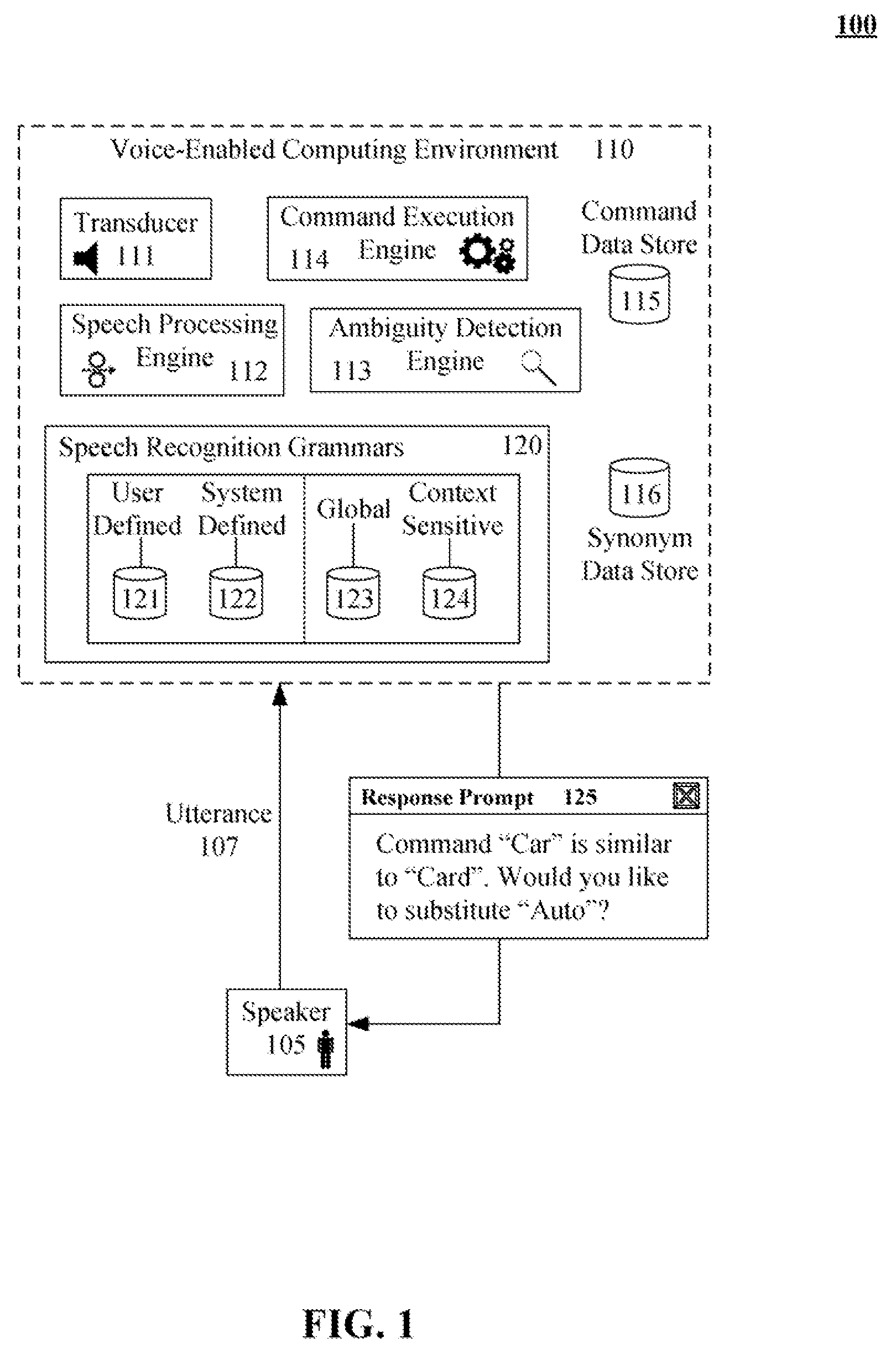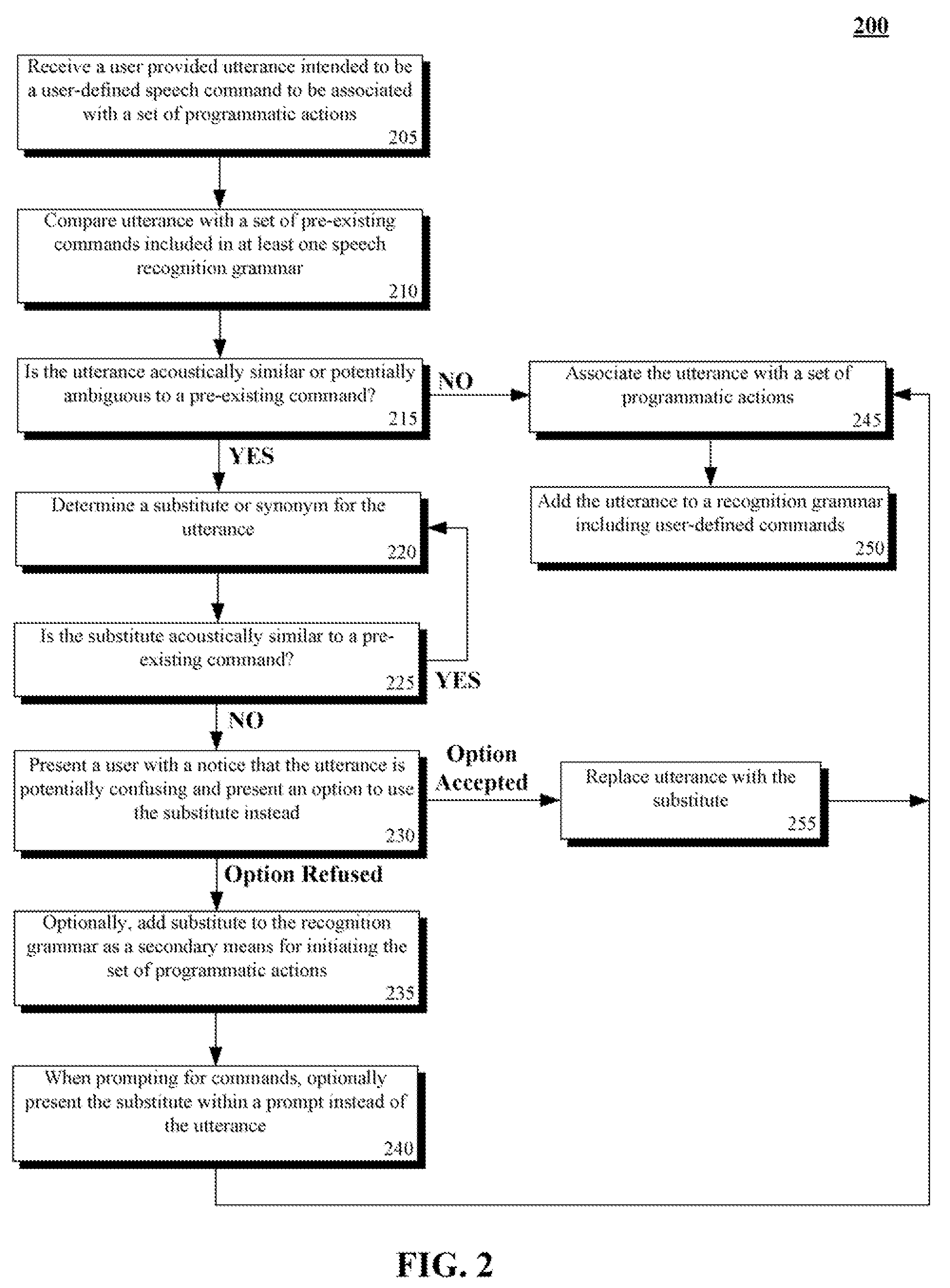Automatically providing a user with substitutes for potentially ambiguous user-defined speech commands
a technology of user-defined speech and automatic provision, applied in the field of speech processing, can solve problems such as recognition confusion, speech recognition ambiguities, speech recognition system misinterpreting user-issued speech commands, etc., and achieve the effect of preventing confusion
- Summary
- Abstract
- Description
- Claims
- Application Information
AI Technical Summary
Benefits of technology
Problems solved by technology
Method used
Image
Examples
Embodiment Construction
[0020]FIG. 1 is a schematic diagram of a system 100 that automatically provides a user with substitutes for potentially ambiguous user-defined speech commands in accordance with an embodiment of the inventive arrangements disclosed herein. In system 100, a speaker 105 can provide a spoken utterance 107 meant to be associated as a user-defined command to a voice-enabled computing environment 110. The voice-enabled computing environment 110 can include one or more speech recognition grammars 120, a speech processing engine 112, an ambiguity detection engine 113, a command execution engine 114, a command data store 115, and a synonym data store 116. The speech recognition grammars 120 can include a user-defined grammar 121, a system defined grammar 122, a global grammar 123, and a context sensitive grammar 124.
[0021]The computing environment 110 can accept the utterance 107 using a transducer 111, such as a microphone. Upon accepting the utterance 107, the ambiguity detection engine 11...
PUM
 Login to View More
Login to View More Abstract
Description
Claims
Application Information
 Login to View More
Login to View More - R&D
- Intellectual Property
- Life Sciences
- Materials
- Tech Scout
- Unparalleled Data Quality
- Higher Quality Content
- 60% Fewer Hallucinations
Browse by: Latest US Patents, China's latest patents, Technical Efficacy Thesaurus, Application Domain, Technology Topic, Popular Technical Reports.
© 2025 PatSnap. All rights reserved.Legal|Privacy policy|Modern Slavery Act Transparency Statement|Sitemap|About US| Contact US: help@patsnap.com



